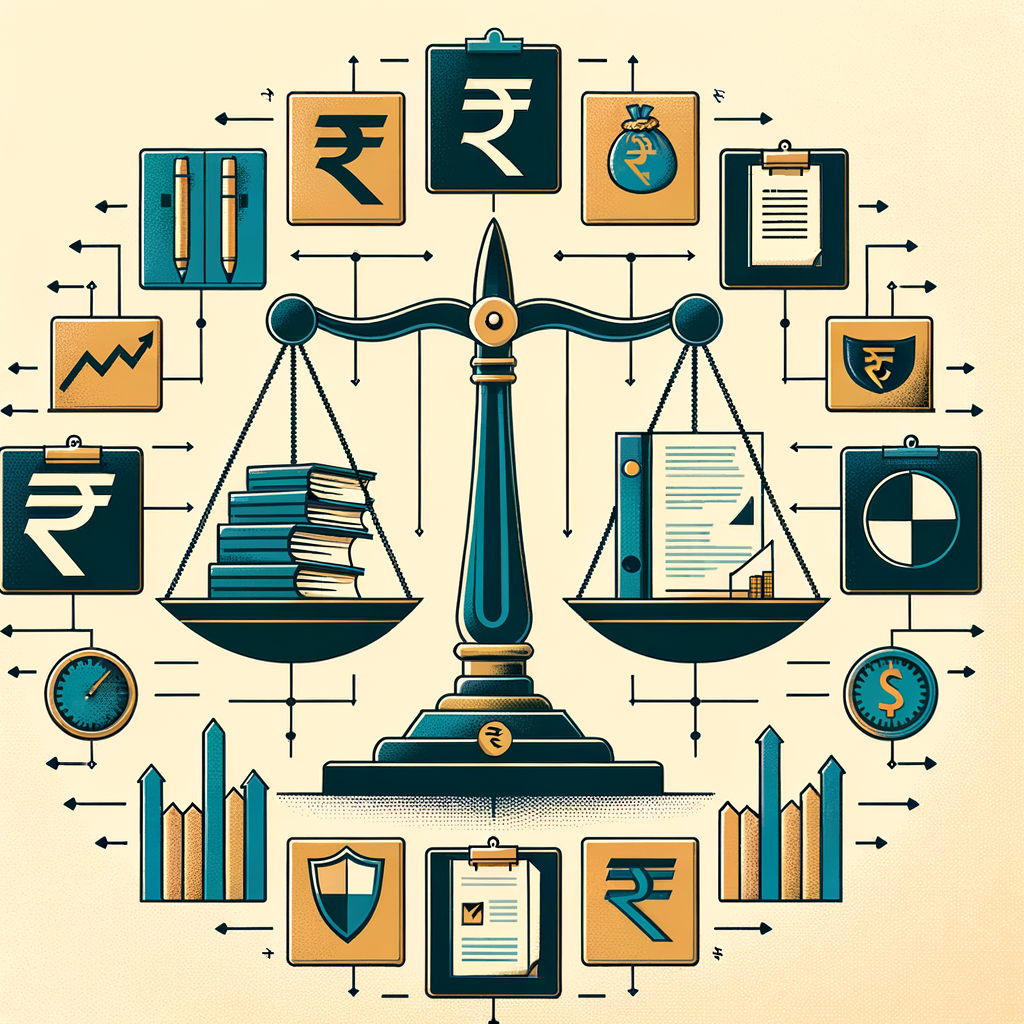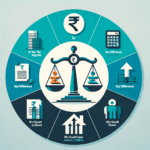New vs Old Tax Regime: Which is Better for You in 2024?
At the start of every financial year, taxpayers across India face a familiar yet crucial decision: which tax regime should they choose? The ongoing debate of new tax regime vs old tax regime can be confusing, but making an informed choice is the first step towards smart financial planning and maximizing your take-home salary. The Indian tax system currently offers two parallel options: the traditional Old Tax Regime, which is packed with a variety of exemptions and deductions, and the simplified New Tax Regime, which offers lower tax rates in exchange for giving up most of those deductions. Understanding the nuances of each is essential because the right selection can lead to significant tax savings. A key update to remember for the financial year 2023-24 (Assessment Year 2024-25) is that the New Tax Regime is now the default option. This means if you don’t make a conscious choice, you will automatically be taxed under the new system. To benefit from the old system, you must actively opt-in.
Understanding the Two Tax Regimes
Before diving into a direct comparison, it’s important to grasp the fundamental philosophy behind each regime. One prioritizes and rewards specific investments and expenses, while the other offers straightforwardness and lower upfront rates. Your financial habits, investment strategy, and life stage will heavily influence which one is more advantageous for you.
What is the Old Tax Regime?
The Old Tax Regime is the traditional method of taxation in India that taxpayers have followed for decades. Its core principle is to encourage savings and investments by allowing you to claim a wide range of exemptions and deductions, which in turn reduce your total taxable income. The benefits of old tax regime for salaried individuals are particularly significant if you have made investments or have specific expenses that qualify for tax breaks. Learning about the Top 10 Tax Deductions for Salaried Employees in India can help you make an informed decision. This regime is often preferred by those who have a home loan, pay rent, invest in tax-saving instruments, and have medical insurance policies.
Key features and popular deductions available under the Old Tax Regime include:
- Section 80C: This is the most popular section, allowing deductions up to ₹1.5 lakh for investments in instruments like the Employee Provident Fund (EPF), Public Provident Fund (PPF), Equity Linked Saving Schemes (ELSS), life insurance premiums, and home loan principal repayments.
- Section 80D: You can claim deductions on premiums paid for health insurance policies for yourself, your family, and your parents.
- House Rent Allowance (HRA): Salaried individuals living in rented accommodation can claim an exemption on the HRA component of their salary.
- Leave Travel Allowance (LTA): You can claim an exemption on the allowance received from your employer for travel expenses within India.
- Standard Deduction: A flat deduction of ₹50,000 is available for all salaried employees and pensioners.
- Section 24(b): Homeowners can claim a deduction of up to ₹2 lakh on the interest paid on their home loan.
What is the New Tax Regime?
Introduced to simplify the tax filing process, the New Tax Regime offers lower and more streamlined income tax slab rates. The primary trade-off is that you must forgo approximately 70 common exemptions and deductions that are available under the old system. The main new tax regime advantages for salaried employees are its simplicity and potentially lower tax liability, especially for those who do not make significant tax-saving investments. This regime appeals to younger professionals, individuals without major financial liabilities like a home loan, or anyone who prefers financial liquidity over locking money into specific investment schemes.
Key features of the updated New Tax Regime (for FY 2023-24 onwards) include:
- Lower Tax Rates: The regime features more slabs with lower tax rates, making it attractive at various income levels.
- Simplicity: With most deductions eliminated, calculating your tax liability and filing your return becomes much less complex, requiring minimal paperwork.
- Higher Tax Rebate: A full tax rebate under Section 87A is available for individuals with a taxable income of up to ₹7 lakh, meaning they pay zero tax. This is made possible by the Section 87A: Tax Rebate for Low-Income Earners.
- Key Retained Deductions: While most deductions are gone, a few crucial ones are still available:
- Standard Deduction of ₹50,000 for salaried employees and pensioners.
- Deduction for the employer’s contribution to an employee’s NPS account under Section 80CCD(2).
The Core Comparison: New Tax Regime vs Old Tax Regime
The best way to understand the practical difference between the two systems is to see them side-by-side. The choice boils down to a simple mathematical equation: does the benefit of lower tax rates in the new regime outweigh the tax saved through deductions in the old one?
Tax Slabs and Rates: A Side-by-Side View (FY 2023-24 / AY 2024-25)
Here is a clear breakdown of the income tax slabs for both regimes.
| Income Slab (₹) | Old Tax Regime Rate | New Tax Regime Rate |
|---|---|---|
| 0 – 2,50,000 | Nil | N/A |
| 0 – 3,00,000 | N/A | Nil |
| 2,50,001 – 5,00,000 | 5% | N/A |
| 3,00,001 – 6,00,000 | N/A | 5% |
| 5,00,001 – 10,00,000 | 20% | N/A |
| 6,00,001 – 9,00,000 | N/A | 10% |
| 9,00,001 – 12,00,000 | N/A | 15% |
| 10,00,001 – 15,00,000 | 30% | N/A |
| 12,00,001 – 15,00,000 | N/A | 20% |
| Above 15,00,000 | 30% | 30% |
Note: A Health and Education Cess of 4% is applicable to the final tax amount in both regimes.
Deductions & Exemptions: What You Keep vs. What You Lose
This table highlights the major trade-offs and is central to deciding between old and new tax regime India.
| Deduction / Exemption | Available in Old Regime? | Available in New Regime? |
|---|---|---|
| Standard Deduction | ✅ Yes | ✅ Yes |
| HRA & LTA | ✅ Yes | ❌ No |
| Section 80C (EPF, PPF, etc.) | ✅ Yes | ❌ No |
| Section 80D (Health Insurance) | ✅ Yes | ❌ No |
| Section 24(b) (Home Loan Int.) | ✅ Yes | ❌ No |
| Professional Tax | ✅ Yes | ❌ No |
| Employer’s NPS Contribution | ✅ Yes | ✅ Yes |
How to Make the Right Choice: A Practical Guide
Making the right choice requires a bit of calculation. You need to compare your tax liability under both scenarios to see which one leaves more money in your pocket.
For Salaried Individuals
For salaried employees, the process is straightforward. Since you can switch between regimes every year, you can perform this analysis annually to ensure you are always opting for the most beneficial system.
Step 1: List and Sum Your Deductions
Before doing any math, make a comprehensive list of all the deductions and exemptions you are eligible for and plan to claim. For example:
- Section 80C Investments (EPF, PPF, ELSS): ₹1,50,000
- Section 80D (Health Insurance Premium): ₹25,000
- HRA Exemption: ₹1,00,000
- Home Loan Interest (Section 24b): ₹2,00,000
- Standard Deduction: ₹50,000
- Total Potential Deductions: ₹5,25,000
Step 2: Calculate Your Taxable Income
Now, calculate your taxable income under both regimes.
- Old Regime Taxable Income = Gross Salary – All eligible deductions (like the ₹5,25,000 calculated above).
- New Regime Taxable Income = Gross Salary – Standard Deduction (₹50,000).
Step 3: Calculate and Compare Tax Liability
Let’s take an example. Suppose your gross annual salary is ₹15,00,000 and your total eligible deductions (excluding Standard Deduction) are ₹3,00,000 (e.g., ₹1.5L in 80C, ₹50k in 80D, and ₹1L HRA).
Under the Old Regime:
- Gross Salary: ₹15,00,000
- Less: Standard Deduction (₹50,000) + Other Deductions (₹3,00,000) = ₹3,50,000
- Taxable Income: ₹11,50,000
- Tax Calculation:
- On first ₹2.5L: ₹0
- On next ₹2.5L (@5%): ₹12,500
- On next ₹5L (@20%): ₹1,00,000
- On remaining ₹1.5L (@30%): ₹45,000
- Total Tax: ₹1,57,500
- Add 4% Cess (₹6,300): Final Tax = ₹1,63,800
Under the New Regime:
- Gross Salary: ₹15,00,000
- Less: Standard Deduction (₹50,000)
- Taxable Income: ₹14,50,000
- Tax Calculation:
- On first ₹3L: ₹0
- On next ₹3L (@5%): ₹15,000
- On next ₹3L (@10%): ₹30,000
- On next ₹3L (@15%): ₹45,000
- On remaining ₹2.5L (@20%): ₹50,000
- Total Tax: ₹1,40,000
- Add 4% Cess (₹5,600): Final Tax = ₹1,45,600
In this example, the New Tax Regime is more beneficial, saving the individual ₹18,200.
The Golden Rule: If your total claimable deductions are substantial (typically over ₹3.75 lakh for higher income brackets), the Old Regime is often more beneficial. If you have few or no deductions, the New Regime will almost certainly save you more money.
For Small Business Owners & Professionals
The decision is more critical for individuals with income from a business or profession. Unlike salaried individuals, you can opt out of the New Regime and switch back to the Old Regime only once in your lifetime. Once you switch back, you cannot opt for the New Regime again. Therefore, this decision requires long-term thinking and careful analysis. You must consider not just your current business expenses and investments but also your future financial plans. For a precise and personalized calculation, it is highly recommended to use the official tax calculator provided by the government.
- You can access the official calculator here: Income Tax Department’s Official Tax Calculator.
- Engaging in robust old vs new tax regime for income tax planning with the help of a tax professional is crucial to avoid making a choice that could be disadvantageous in the long run.
Conclusion
The new tax regime vs old tax regime debate doesn’t have a one-size-fits-all answer. The “best” regime is entirely personal and depends on your income level, investment habits, and financial liabilities. The Old Regime is designed to reward individuals who actively save and invest in specified avenues like home loans, insurance, and retirement funds. In contrast, the New Regime offers simplicity, flexibility, and lower tax rates for those who prefer not to be tied down by these investment requirements. Before making your final decision, take the time to calculate your tax liability under both systems. This small effort can lead to substantial savings and better financial health.
Still unsure which tax regime to choose for your ITR filing? The experts at TaxRobo can analyze your financial situation and provide personalized advice to maximize your tax savings. Contact Us Today for a Consultation!
Frequently Asked Questions (FAQs)
1. Which tax regime is the default for FY 2023-24?
The New Tax Regime is the default option for the Financial Year 2023-24 (Assessment Year 2024-25). If you wish to use the Old Tax Regime, you must explicitly select it when filing your Income Tax Return (ITR). Our Step-by-Step Guide to Filing Income Tax Returns for Salaried Individuals in India can walk you through the process.
2. Can I claim my home loan interest deduction under the New Tax Regime?
No. The deduction for interest paid on a home loan under Section 24(b) is not available under the New Tax Regime. This is a major factor for homeowners to consider, as this deduction significantly reduces tax liability under the old regime.
3. As a salaried employee, can I switch between the two regimes every year?
Yes, salaried individuals have the flexibility to choose the most beneficial regime for them each financial year. You can make this choice at the time of filing your income tax return.
4. Is the standard deduction of ₹50,000 available in both regimes?
Yes, effective from FY 2023-24 (AY 2024-25), the standard deduction of ₹50,000 has been extended to the New Tax Regime. It is available to salaried individuals and pensioners under both the old and new tax systems.



